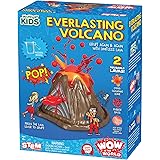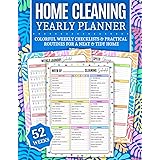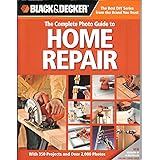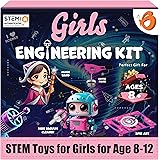Crafting Engaging DIY Learning Toys for Kids: An Overview of Educational Crafts
In the crucial early years of a child’s life, active engagement through play is widely recognized as foundational for holistic development. Consequently, many educational benefits are often observed when children are provided with opportunities for hands-on learning. The accompanying video effectively showcases several imaginative and budget-friendly methods for creating stimulating **DIY learning toys for kids** right at home. These homemade educational crafts are instrumental in fostering creativity, enhancing problem-solving skills, and supporting fine motor development without requiring significant financial investment.
Research consistently indicates that play-based learning helps children comprehend complex concepts more effectively than passive observation alone. For example, a study published in the American Journal of Play highlights that imaginative play significantly boosts cognitive flexibility and language acquisition in young learners. Therefore, incorporating simple, self-made educational resources into daily routines becomes a practical approach to nurture a child’s natural curiosity and developmental milestones. Furthermore, the process of creating these toys together can become an enriching bonding experience for families.
Personalized Puzzles: Making a Jigsaw from a Photo
One particularly effective method for engaging young minds involves the creation of personalized puzzles, as demonstrated in the video. A jigsaw made from a familiar photograph can be incredibly motivating for a child, offering a unique blend of recognition and challenge. Such an activity directly supports visual recognition skills and spatial reasoning, which are crucial components of early cognitive development. Furthermore, the act of fitting puzzle pieces together meticulously refines a child’s pincer grasp and hand-eye coordination.
To construct a bespoke puzzle, a laminated photograph or one adhered to stiff cardstock is often recommended for durability. Decoupage glue, or a similar adhesive like Mod Podge, is typically applied to seal the image and provide a protective layer, ensuring the longevity of the puzzle. Once completely dry, the photo can be carefully cut into various shapes and sizes, perhaps utilizing dimensions such as 18.5 cm by 12.5 cm for a moderately sized puzzle. Consequently, the child is presented with a familiar image that transforms a challenging task into a rewarding experience, reinforcing self-efficacy.
Igniting Imagination with Book-Themed Activities
Books serve as gateways to new worlds, and the video subtly highlights their importance with text like “A BOOK TO HELP YOUR CHILD DEVELOP.” The mention of titles such as “ПУТЕШЕСТВИЕ НА ЛУНУ” (Travel to the Moon) and “КОСМОДРОМ” (Cosmodrome) suggests a theme of space exploration, which can be an excellent catalyst for imagination. Developing activities around such narratives encourages literacy and expands a child’s understanding of the world beyond their immediate environment.
Integrating story time with creative play significantly amplifies the educational impact. For instance, after reading about space, children might enjoy building their own miniature “COSMODROME” using recycled materials. This kind of imaginative play is understood to develop narrative skills and foster an early interest in STEM subjects. Therefore, a rich learning environment is created where stories are not just heard but are actively experienced and brought to life through hands-on activities, promoting deeper comprehension and retention.
Sensory Art Exploration: Puffy Paint Stamps
The concept of “PUFFY PAINT STAMPS FOR KIDS” offers a fantastic avenue for sensory exploration and artistic expression. Sensory play is vital for young children, as it stimulates multiple senses simultaneously, contributing to brain development and helping children process sensory information. The tactile experience of puffy paint, with its unique texture, can be particularly engaging for curious hands. Additionally, creating stamps enhances fine motor control and encourages pattern recognition.
Homemade puffy paint can be easily prepared using common household ingredients. A typical recipe involves combining glue, shaving foam, and food dyes to achieve vibrant colors and a delightfully fluffy consistency. Once mixed, the paint can be applied to various surfaces or used to create stamps, allowing for creative patterns and designs to emerge. Allowing the creations to dry completely ensures the puffy texture remains intact, providing a lasting sensory art piece. Consequently, children are provided with a dynamic medium for expressing creativity and refining their sensory processing abilities.
The Magic of Homemade Modeling Dough
Few materials offer the versatile developmental benefits of homemade modeling dough, an excellent example of **DIY learning toys for kids**. Working with dough is known to strengthen hand muscles, which are crucial for developing pre-writing skills and overall dexterity. The repetitive actions of kneading, rolling, and shaping also offer a calming, therapeutic experience, allowing children to express emotions and relieve stress effectively.
A simple and effective recipe for creating this malleable material involves specific measurements to achieve the ideal consistency. Typically, a mixture comprising 1 cup of salt, 2 cups of flour, 2 tablespoons of vegetable oil, and 1.5 glasses of water is combined thoroughly. Food dyes are then introduced to the mixture, allowing for a spectrum of colors that further stimulates creativity and visual engagement. Once the ingredients are fully integrated, the dough can be kneaded until smooth and pliable, ready for hours of constructive play and imaginative molding. These **educational crafts for children** provide a tangible outlet for creativity and fundamental skill development.







